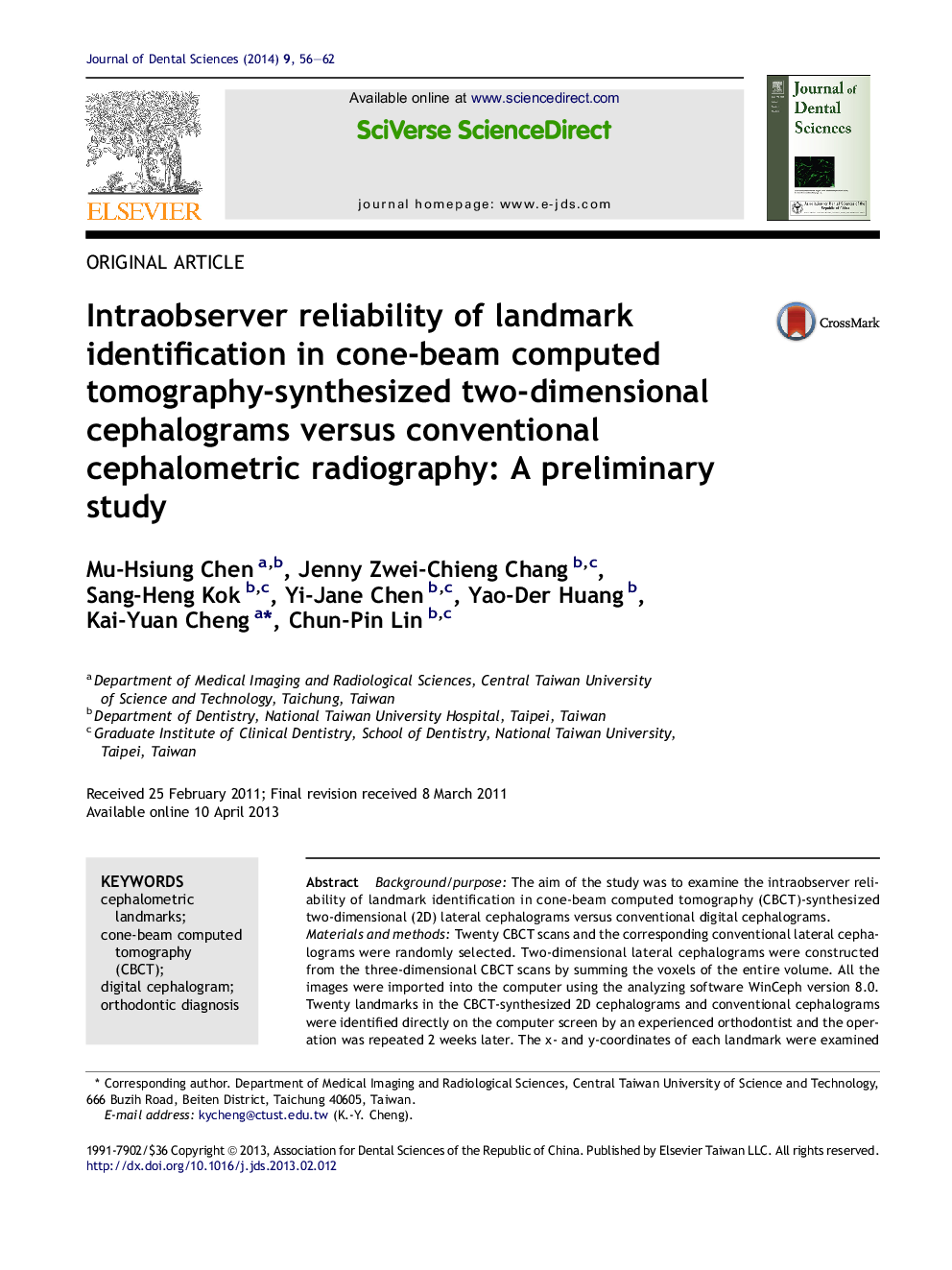| Article ID | Journal | Published Year | Pages | File Type |
|---|---|---|---|---|
| 3144754 | Journal of Dental Sciences | 2014 | 7 Pages |
Background/purposeThe aim of the study was to examine the intraobserver reliability of landmark identification in cone-beam computed tomography (CBCT)-synthesized two-dimensional (2D) lateral cephalograms versus conventional digital cephalograms.Materials and methodsTwenty CBCT scans and the corresponding conventional lateral cephalograms were randomly selected. Two-dimensional lateral cephalograms were constructed from the three-dimensional CBCT scans by summing the voxels of the entire volume. All the images were imported into the computer using the analyzing software WinCeph version 8.0. Twenty landmarks in the CBCT-synthesized 2D cephalograms and conventional cephalograms were identified directly on the computer screen by an experienced orthodontist and the operation was repeated 2 weeks later. The x- and y-coordinates of each landmark were examined for intraobserver reliability. The differences in landmark reproducibility between the two modalities were analyzed with a paired Student t test.ResultsThe horizontal and vertical errors of landmark identification by the two modalities of cephalometry ranged from 0.18 mm to 1.67 mm. Fewer landmarks in CBCT-synthesized cephalograms had intraobserver error >1 mm. Significantly better reliability was observed in CBCT-synthesized cephalograms at the menton, lower central incisor edge, and lower central incisor root apex landmarks in the horizontal dimension and at the pogonion, gnathion, menton, upper central incisor root apex, lower central incisor root apex, and lower molar landmarks in the vertical dimension. Scatter-plots revealed a characteristic pattern of error distribution for each landmark.ConclusionCBCT-synthesized lateral cephalograms can successfully replace conventional cephalograms for orthodontic diagnosis.
